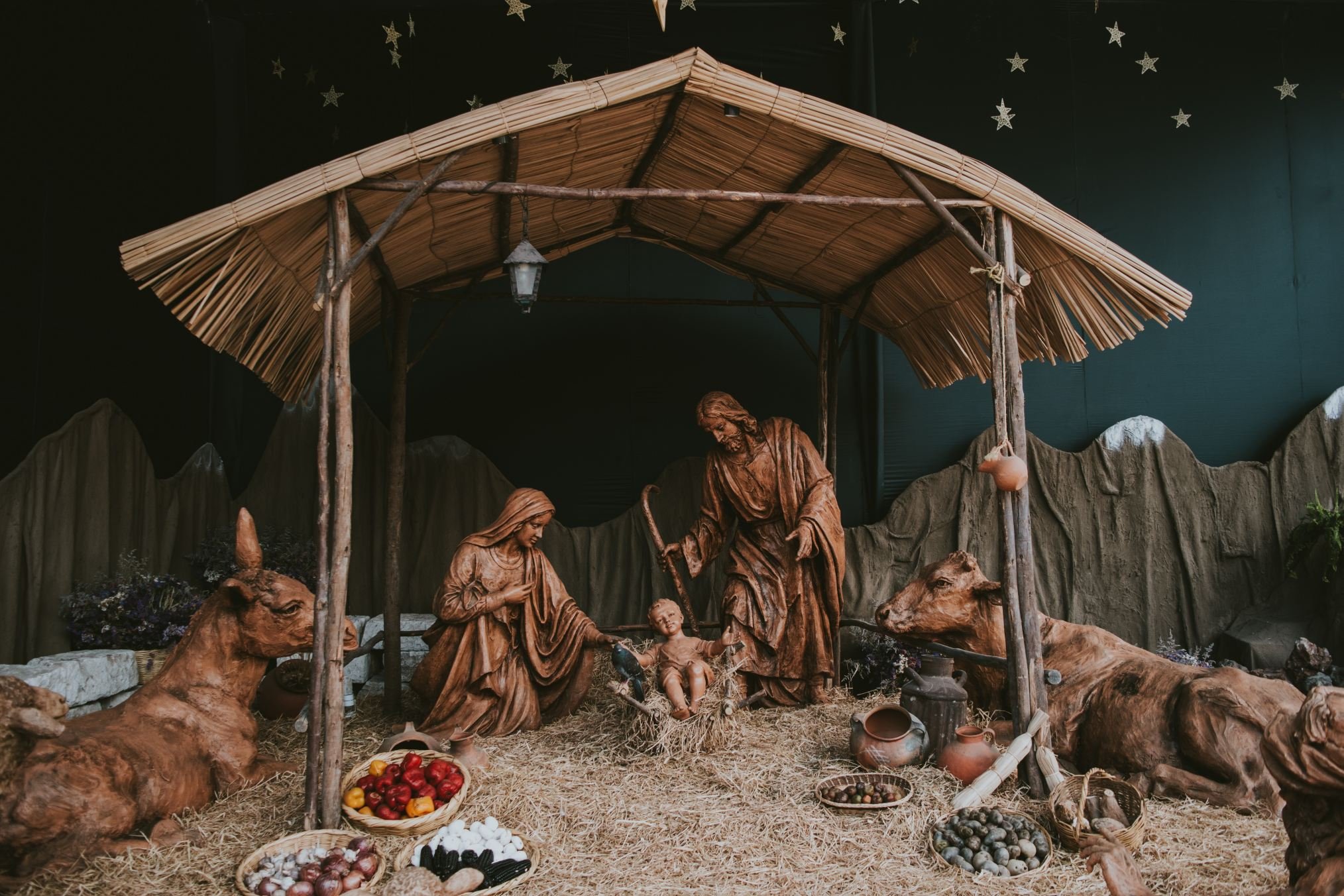Where Was Jesus Born: A Barn, Cave, or House
The question “Where was Jesus born?” is surprisingly tricky. The snarky answer is, “In Bethlehem.” Yes, but where? The typical nativity scene features the holy family in a stable that looks like a barn, separate from the Inn, where there was no room. But is this accurate? Most historians and scholars say, “Not so much.”
Since students are growing increasingly cynical about the particulars of the nativity, it’s important to teach it accurately so they can have confidence in the Christmas message.
What We Know
We know that Jesus was born in Bethlehem, there was no room “in the inn,” and that he was wrapped in swaddling cloths and laid in a manger.
“And Joseph also went up from Galilee, from the town of Nazareth, to Judea, to the city of David, which is called Bethlehem, because he was of the house and lineage of David, to be registered with Mary, his betrothed, who was with child. And while they were there, the time came for her to give birth. And she gave birth to her firstborn son and wrapped him in swaddling cloths and laid him in a manger, because there was no place for them in the inn.” Luke 2:4-7 (ESV)
Aside from these basics, there’s a lot of detail left open: Why were they turned away from “the inn?” Why was there a manger, and does that mean they were in the barn with the animals? Where did people in ancient Bethlehem keep the animals?
These types of questions have led to a few different theories about where Jesus was actually born, which are briefly summarized below.
The Popular Assumption: In a Barn
If you look at any manger scene or contemporary nativity sets, this is the popular image presented. Understandably, the reasoning goes like this: Jesus was placed in a manger, which was a feeding trough for livestock, so he must’ve been born in the barn with the animals. This is where farmers today keep their animals, but people in the Ancient Near East (which includes Israel) simply didn’t do this. This theory is a product of contemporary Western life and is fairly easy to dismiss.
The Traditional View: A Cave
The Early Church Fathers wrote about Jesus being born in a cave. Justin Martyr (150 A.D.), Origen (250 A.D.), Jerome (325 A.D.) each believed this was the case. In 335 A.D, Emperor Constantine approved the cave that was the traditional site of Jesus’ birth to be turned into a holy site, known as the “Church of the Nativity.”
The people of Bethlehem were known to keep their flocks in an adjoining cave to their homes. There is archaeological evidence for animals being housed in caves. And yet, it is important to remember that despite the Church of the Nativity being commissioned as a holy site as early as 325 A.D., the Bible does not make definitive reference to a cave, only to a manger. It is entirely possible that Origen and Jerome simply followed Justin Martyr’s early-but-wrong theory.
The Most Likely View: A House
The image below is a reconstruction of what homes in Bethlehem looked like. Typically, the bottom floor was a place for the most valuable animals to be housed, especially during inclement weather. The top floor was the primary residence for the family and always included an “upper room” that would serve as a guest room for visitors. This is the type of room that Jesus and his disciples used to celebrate the Passover because it was completely expected for faithful Jewish families to show hospitality to travelers, especially to family. When Luke 2:7 says “there was no room for them in the inn,” the Greek word is the word for this guest room, not for a hotel (there was a different word for that, which is used in the Parable of the Good Samaritan). Because of the census, the upper room was already too full for them to give birth, so they stayed in the lower level where there was enough room for everything that goes into birthing a child. This view also reflects the cultural priority of hospitality and the high unlikelihood that Joseph and Mary’s family would turn them away while she is in her final day(s) of pregnancy, even despite the scandal of her being pregnant before their official marriage. This article explains this view and the historical background in greater detail. This view is also well-attested by reputable Bible Dictionaries (see their entries for “manger” and “inn”).
An Unlikely but Interesting Theory: Migdal Eder
This final view is a new one I’ve only recently learned. I love the theological themes and foreshadowing involved, but this is precisely what makes me skeptical. This view highlights that the shepherds of Bethlehem were specially tasked with birthing and caring for the lambs who would be provided for temple sacrifice. The Tower of Migdal (in Hebrew, Migdal Eder) was the watchtower for the special flock of appointed sheep who would be sacrificed for the atonement of Israel. Lambs were wrapped in swaddling cloths to keep them from injury and laid in mangers for their own protection. Thus, when Christ was wrapped in swaddling cloths and laid in a manger, and then worshipped by the shepherds, it was a clear reflection of Jesus Christ, “The Lamb of God who takes away the sin of the world.” This may be a possibility, but it seems like a stretch. While it offers beautiful imagery, I remain convinced the simplest explanation is probably the most reliable, but this interpretation is worth further study. You can read more about it here or watch a video about it here.
Why Does it Matter?
Resist the temptation to bash and criticize all the ways our popular manger scenes are wrong. And resist the ease of perpetuating Americanized pictures of what happened on that morning in ancient Israel. Preach Scripture, helping students get a clear picture of what happened surrounding the birth of Jesus.
In the midst of the uncertain details and whichever theory you believe is most likely, don’t lose sight of the wonder: that a simple manger became God’s throne. This is the point of the story, let’s not overlook it because we’re stuck in the details God didn’t believe were important enough to preserve.
note: a version of this article appeared on my previous site, Living Theologically.



